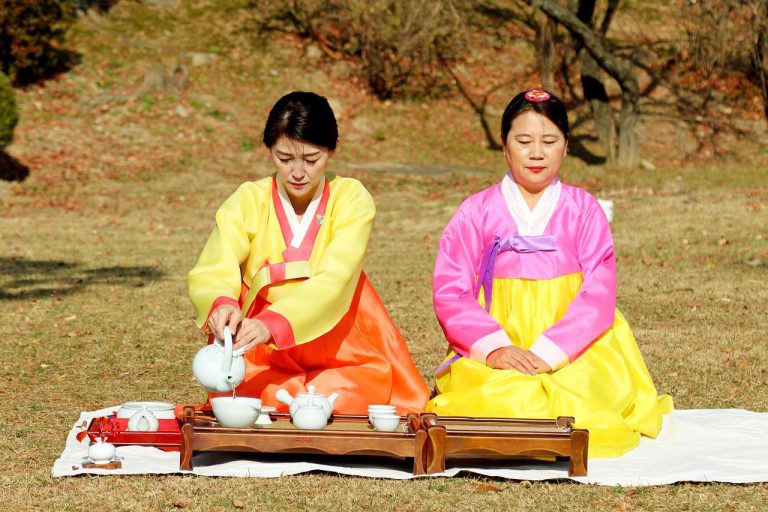The tea and tea culture found in Korea and China are two exquisite ways to explore the world of tea. Korea’s tea and tea culture have been influenced by China for centuries, yet over time has also developed tea and tea culture all its own. Today we will take a closer look at what sets these two types of tea apart.
To discover more, keep reading!
Table of Contents
History of Exchange
Korea-China relations go back ages and have a long, often complicated history. For a long time, Korea was one of the highest-ranked kingdoms in China’s tributary system and had an “Older Brother-Young Brother” relationship as per the Confucian tradition of nation-building.
When it comes to tea, a large portion of Chinese tea culture was imported into Korea mostly by Buddhist monks. Korean traditions would mostly follow the Chinese style of things while also developing their own unique modes of cultivation and enjoyment.
In 1910, Korea’s relationship with China was severed when it was invaded by Imperial Japan. The Empire of Japan would impose Japanese styles of tea processing and etiquette into Korea. After Korea’s liberation and the ensuing tumult of the Korean war, Korean tea and tea culture had to rebuild and rehabilitate itself from scratch. Luckily, some of Korea’s tea traditions had been preserved by Buddhist monks and Confucian scholars. As Korean tea and tea culture now 3 main strains of influence, Chinese, Japanese, and of course, native Korean, it has developed a truly unique character.
That is not to say China’s tea lacks uniqueness or diversity, far from it! China is often regarded as the “origin place” of tea, and, indeed, some of the first evidence of the consumption of the Camellia Sinensis plant are in China and some of the surrounding areas of Southeast Asia. With a tea tradition that goes back 3000-5000 years and a truly diverse and far-flung territorial expanse, it is not surprising that Chinese green tea alone sports a massive catalog of tea types, flavors, aromas, and characteristics.
Two Different Traditions
Korea and China have a lot of similar teas but the differences are what also make them splendid. To begin with similarities and segue into differences, Korea has followed China’s style of tea processing for centuries. Grinding the tea into a smaller form was en vogue. It was often then steamed and compressed into bricks. Korea was also known follow this tradition, but later on, pan-firing became their main method of preventing rapid oxidation of the tea leaves, which is necessary to produce green tea.
Steaming leaves is the preferred method used in Japan and was the common method of processing tea leaves during the colonial period in Korea, too. Tea processed in this way has a different flavor profile than pan-fired tea.
Some other significant differences in regards to Korean and Chinese tea would have to be the difference in scale. Korean green tea does have its own unique styles including ujeon, sejak, and many others. Some of the differences between these types of green tea leaves are the times when they are picked, for example before or during peak growing seasons or before, during, or after the rainy season. Korea has several illustrious growing regions including Jeju island, Hadong, Boseong, and other areas around Mount Jiri, but the weather does of course fluctuate.
Meanwhile, Chinese teas also differ in regards to when they have been plucked, and how they have been processed, and certainly differ by region. The most famous tea-growing regions in the world are located in China. Regions such as Fuzhou, Anhui, Yunnan, and many others. As these regions display a true myriad of diverse environments for tea to grow, Chinese tea leaves can display a wide array of unique characteristics.
To explain in contrast, the Longjing variety sports a flavor and aroma palette described as nutty, mellow, and sweet whereas another Chinese green tea leaf, the Chun Mee is described as plum-like and buttery!
Two Traditions: Similar Yet Diverse
Some of the key differences between Korean and Chinese green tea include Korean teas sometimes displaying a flavor and aroma palette somewhat akin to Japanese-style steamed tea. Korean teas are also rather uniform and have more subtle diversity in leaf types compared to the wide catalog of different Chinese green teas. But, of course, to grasp the difference, the best way to do so is to try these leaves yourself! You may discover your new go-to green tea leaf!

